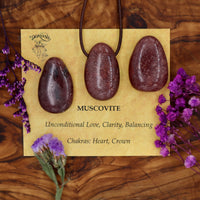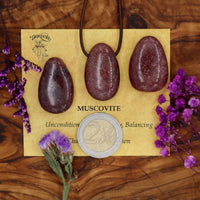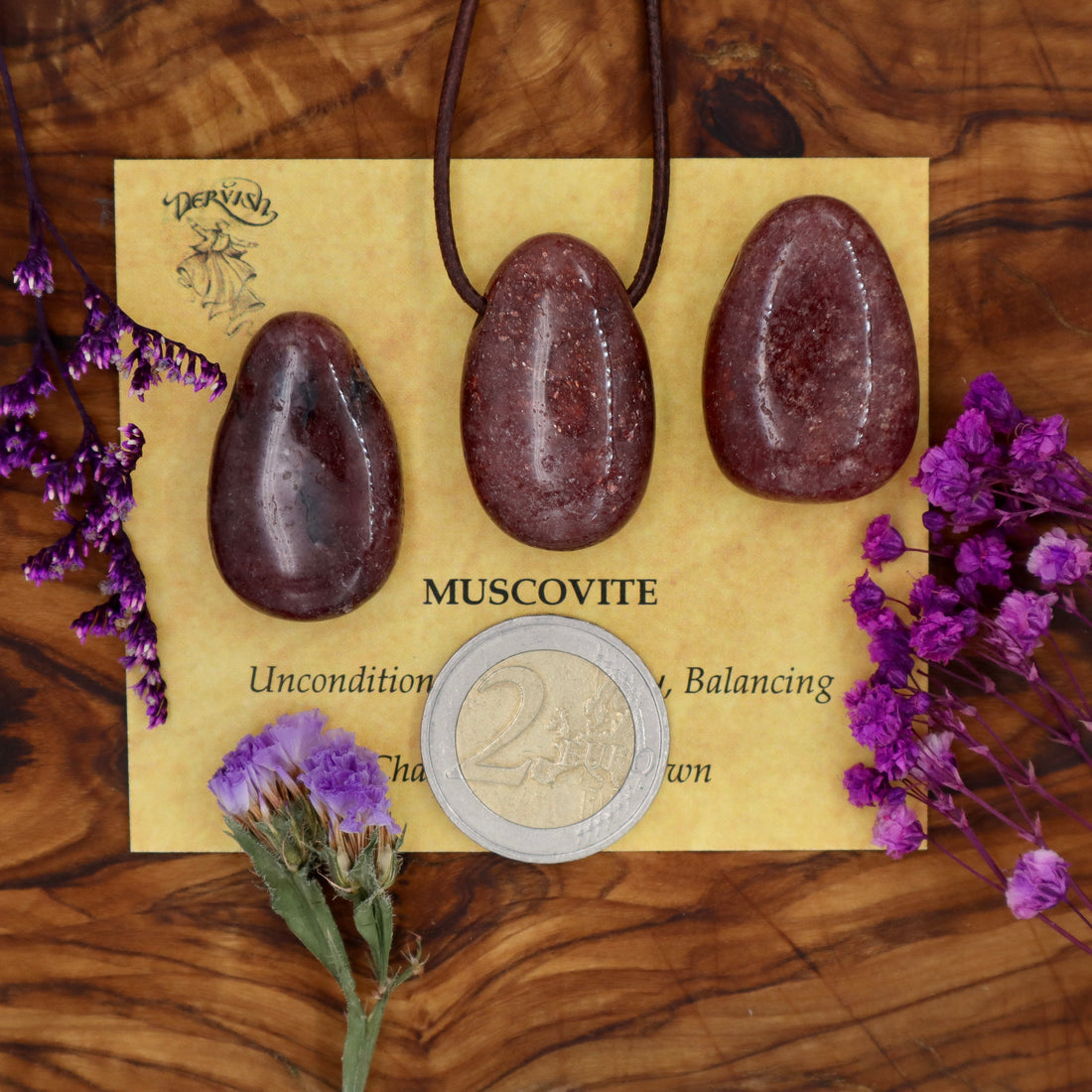

Muscovite Tumblestone Pendant
Hope, Discernment, Protection
Chakra: Base, Heart, Third Eye and Crown
Birthstone: Leo
Hardness: 2.5
Composition: Mica - Silicate mineral
Formula: KAI2(Si3AI)OH,F)2
Colour: Rose-red, can also be colourless, silvery-white, green and brown
All Muscovite is natural, enhanced only by tumbling, cutting, and polishing. Muscovite is the most common member of the mica group. It is a Silicate mineral, which are the largest family of minerals. In addition to being a major part of the Earth’s crust, Silicate minerals have also been found on the moon and in meteorites.
Metaphysical & Healing Properties
Powerful energy magnifier and protector. Helps with discernment and decision-making skills. Promotes courage to make difficult decisions as well as protecting one from any negative energy. This stone enhances telepathy, clairvoyance, astral travel and allows one to be more open to inter-dimensional communication.
Helpful in assisting with disentanglements such as painful break-ups, relationships which no longer serve the highest good and dissolves insecurities. It encourages compassion as well as self empowerment.
It promotes clear thinking and understanding of complex information. Assists with deeper understanding of advanced theories in music, philosophy and mathematics. It’s recommended for teachers and students as well as business owners, artists, leaders and anyone wanting to tap into their fullest mental abilities.
Useful to use for grid work.
Particularly helpful with anything to do with the brain and mental distress. Also assists with headaches, dizziness, vertigo and sleep problems.
Harmonizes/Combines with Aquamarine, Biotite, Emerald, Feldspar, Morganite and Tourmaline
History
Muscovite is the most common member of the Mica group, but was not included in older texts that describe gemstones and their powers. The modern name Muscovite comes from the term “Muscovy Glass” which dates back to Elizabethan England. During that time period, mines near Moscow, Russia were producing long sheets of Muscovite that could be split into very thin slices. Some of these slices were nearly transparent and either clear white or lightly tinted. As a result, it was used as window panes and was a cheaper alternative to glass.
Disclaimer
Crystal properties are listed for information purposes only and are not intended to replace medical advice. Always consult a physician for proper medical treatment.


